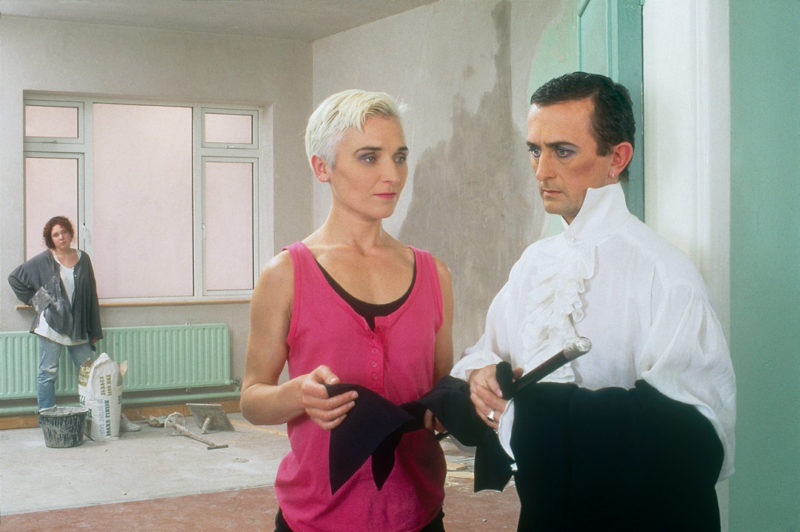[Winter 2022]
By Stephen Horne
“A being racing into the future passes
a being racing into the past two footprints
perpetually obliterating one another
toe to heel, heel to toe.”
– W. B. YEATS 1
[Excerpt]
James Coleman´s complex cinematic installations disclose the beauty and pleasure of “looking.” The aesthetic experience to which I refer is sourced in a notion of “play” as understood in the context of theatre, where it has some reference to the practice, and even the pretense, of dissimulation. Or of deception, in the sense that we might say the mass media “plays” us – play in the sense of a “slippage” or as a synonym for ambiguity. Coleman’s cinematic installations are composed of the play that can exist between words and images, sound and sight, and are intently concerned with a conception of time as void or lack. His process is a critical intervention in a rationalism that “boxes” in, or contains, the flux of time with a demand for coherence, unity, and linear progress. Michael Snow has been an important inspiration for Coleman, who has taken on Snow’s statement “There is something inside repetition.”2 A retrospective of Coleman’s installations was presented during summer 2021 at the Pompidou Centre in Paris.3
Coleman’s image projections are isolated in a black room, with the projection apparatus exposed and incorporated into the viewing experience. In a number of his works, he uses the technique of the slide-tape, a device that synchronizes sound and image, adapted from commercial use. Other works are presented as films, film loops, and videos. The entire apparatus of projection is a primary reference. A “projected image” makes a virtue of its own failing with regard to its potential for permanence. Coleman adopts aspects of theatre and of media such as recording, storage, and playback. His installations have the appearance of an intervention in a mise en scène being prepared in the studio, prior to being filmed, as if we have taken a step back in time and caught the work in process. Speaking and seeing are related but not connected in any predictable sequence.
Before I discuss the Pompidou retrospective, we could look at one earlier and remarkable piece. Box (ahhareturnabout) (1977), a film-loop projection, places us already in the middle of an event and of a story. There is a projection mechanism in a darkened room, and the room resonates with a booming, grinding rhythmic sonic impact. Images and sounds, interspersed with black frames, feel like blows. The sound is difficult to place, as it emanates from within the felt sense of one’s own body.
2 Michael Snow, quoted in Martha Langford, Michael Snow: Almost Cover to Cover (London: Black Dog Publishing, 2001), 73.
3 Titled simply James Coleman, it was held from June 9 to August 23, 2021. Coleman was born in rural Ireland in 1941, and he has lived and exhibited primarily in Europe.
[ Complete issue, in print and digital version, available here: Ciel variable 119 – AGAINST NATURE ]
[ Individual article in digital version available here: James Coleman, What Goes Around Comes Around — Stephen Horne ]

